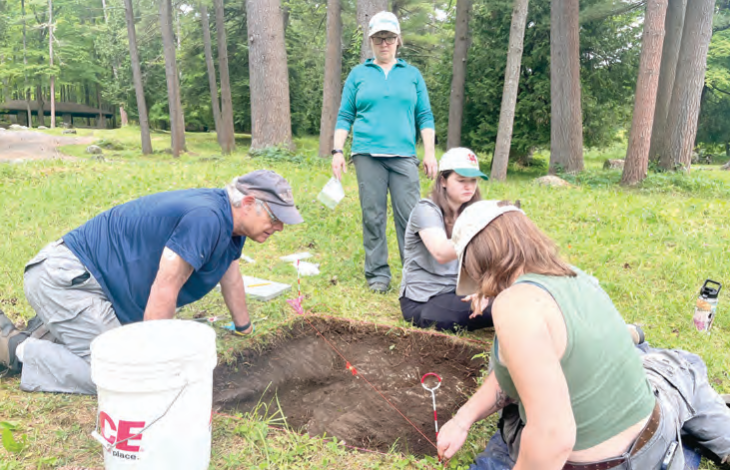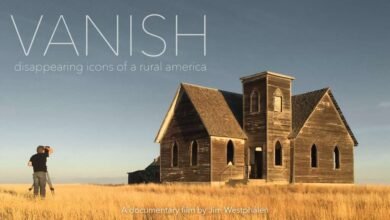Archaeologists Return to Lake George 18th Century Military Sites


 After an absence of several years, archaeologists returned to Lake George’s Fort George last summer, led by Dr. Siobhan Hart, chair of Skidmore College’s Anthropology Department. Hart and a team of students will resume their work at Battlefield Park this summer, expanding the project to include other important sites within Battlefield Park according to the Lake George Battlefield Park Alliance.
After an absence of several years, archaeologists returned to Lake George’s Fort George last summer, led by Dr. Siobhan Hart, chair of Skidmore College’s Anthropology Department. Hart and a team of students will resume their work at Battlefield Park this summer, expanding the project to include other important sites within Battlefield Park according to the Lake George Battlefield Park Alliance.
This summer’s digs are co-sponsored by the Alliance and Skidmore College and will be conducted with the guidance of New York’s Department of Environmental Conservation, which manages the state-owned property.
According to John DiNuzzo, the president of the Lake George Battlefield Park Alliance, the first modern archaeological digs at Fort George were begun by the late David Starbuck in 1998 and concluded 2016, four years before his death.
“One of the challenges with archaeology, especially at a site such as the Lake George Battlefield Park, which was acquired by New York State as parkland in 1898 and which has remained relatively undisturbed since then, is to be as unobtrusive as possible while, at the same time, uncovering valuable information. The scientific approach of David Starbuck and now, Siobhan Hart, makes that possible,” said DiNuzzo.
An expert in the use of GPS and Ground Penetrating Radar, a non-invasive survey technique that uses electromagnetic pulses to identify variations and anomalies in the subsurface, Hart’s archaeological practices are even less intrusive than Starbuck’s.
“My approach is, ‘Survey more, dig less,’” said Hart “While my approach is different from David Starbuck’s, I’m guided by his commitment to the advancement of our knowledge of this significant place and to his ethic of stewardship and preservation.”
Last year, Hart and her team directed their research toward two locations and two areas of inquiry: at the northeastern edges of Battlefield Park, the barracks, kitchens and smallpox hospitals of the Revolutionary War era; and at the park’s southern-most end, the combatants’ lines at the 1755 Battle of Lake George.
“We spent half our time at the Revolutionary War site collecting Ground Penetrating Radar data and mapping the area, and the other half excavating a small area,” said Hart. “We found common artifacts of 18th century material culture but no obvious military items nor any direct evidence that this area was used to house smallpox patients.”
At what has been determined to be a section of the battlefield where Sir William Johnson’s British and colonial troops repulsed the French and their Native American allies in September, 1755, no evidence of battle lines was found.
“We did, however, recover evidence that this land was used for agriculture from the end of the Revolutionary War almost to the present,” said Hart.
Which is not to say that the absence of any startling new discoveries about either the French and Indian War or the War of Independence at Lake George area should be taken to mean that the digs were a waste of effort.
“While we didn’t find direct evidence of an 18th century smallpox hospital or British battle lines, we increased our knowledge and the amount of our data,” said Hart. “Archaeology is a cumulative research endeavor, and rarely do we find amazing things at the beginning a project.”

 Among other things, Hart was able to test the effectiveness of Ground Penetrating Radar as an archaeological tool and to promote public awareness of the historical significance of Fort George and Battlefield Park as a whole.
Among other things, Hart was able to test the effectiveness of Ground Penetrating Radar as an archaeological tool and to promote public awareness of the historical significance of Fort George and Battlefield Park as a whole.
“Because of the visibility of our work, we were able to engage with casual visitors to the park, with those who came specifically to see what we were doing and learn about the history of the site and with school groups, some of whom participated in a demonstration of Ground Penetrating Radar,” said Hart.
“The Lake George Battlefield Park Alliance issued press releases and coordinated media visits, which was extremely helpful in getting the word out.”
The archaeological work also led to other projects, such as a pilot project that will enable Skidmore students to catalogue artifacts collected at Fort George in the past and which are now in the collections of the New York State Museum, and opened up other avenues of research.
This summer, Hart’s plans include working in an area west of Fort George Road, below the monument to Saint Isaac Jogues, a site where David Starbuck and his teams worked as well.
According to the Lake George Battlefield Alliance, which operates the Park’s Visitor Center where a wide array of artifacts uncovered during nearby archaeological digs are on permanent display, “David Starbuck strongly advocated additional research.”
“Sampling within Lake George Battlefield Park thus far has probably only located a small fraction of the 18th-century sites in the park,” Starbuck wrote in a privately published book 2020. “Our field work should be viewed as just a beginning to the historical and archaeological research that can and should be conducted here at the southern end of Lake George.”
Among other things, Starbuck uncovered the ruins of a partially constructed fort which, had it been completed, would have been the largest British fort in North America.
“David Starbuck wrote that the Battlefield Park is slowly coming into its own as a truly major military attraction on Lake George,” said Siobhan Hart.
“Archeology offers not only an opportunity to learn more about the lives of people in a place that is important to American history, but also the opportunity to share that knowledge, which is one of the many lasting legacies of David Starbuck and people such as the late Chuck Vandrei, who, like him, cultivated the public appreciation of the multi-layered history of these grounds.”
This year’s surveys resumed June 2nd. Hart and her team can be found within Battlefield Park on weekdays from 10 am to 2 pm through June 27th unless, weather permitting.
“We are excited to return to the Lake George Battlefield Park to use ground-penetrating radar and other non-invasive geophysical techniques, along with excavation, to learn more about day-to-day human experiences in 18th century military encampments. We hope to find evidence that will help with site management, stewardship, and public interpretation at this important place,” said Hart.
The public is invited to observe the survey team at work. The Battlefield Alliance, however, recommends that spectators check in with staff at Battlefield Park Visitor Center first.
On June 14, Professor Hart will make an informal public presentation about her team’s archaeological survey at the Lake George Battlefield Park Visitor Center at 1 pm. The Lake George Battlefield Park Visitor Center will be open 10 am to 2 pm Monday through Thursday and 10 am to 4 pm on weekends.
Photos, from above: Skidmore College Professor Siobhan Hart, left, supervising archaeological work at Fort George in 2024; and Hart, center, overseeing a survey square in 2024.
A version of this article first appeared on the Lake George Mirror, America’s oldest resort paper, covering Lake George and its surrounding environs. You can subscribe to the Mirror HERE.
Source link




